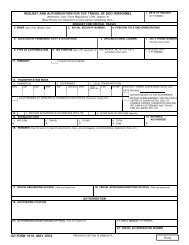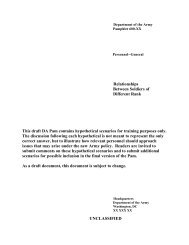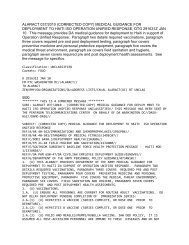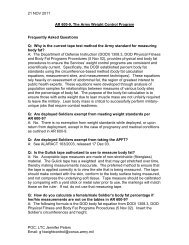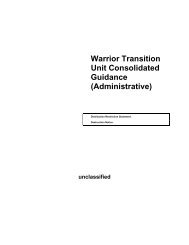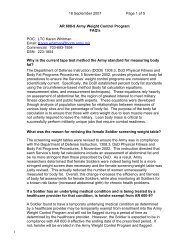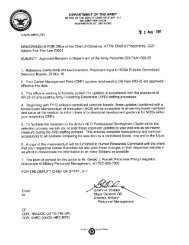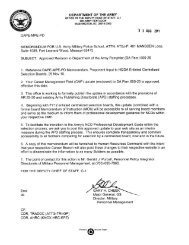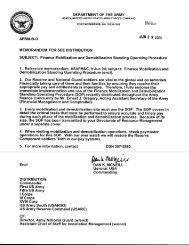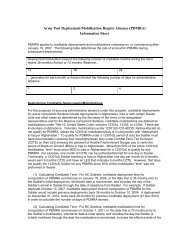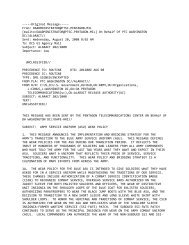Unit Equal Opportunity Training Guide - Deputy Chief of Staff ARMY ...
Unit Equal Opportunity Training Guide - Deputy Chief of Staff ARMY ...
Unit Equal Opportunity Training Guide - Deputy Chief of Staff ARMY ...
You also want an ePaper? Increase the reach of your titles
YUMPU automatically turns print PDFs into web optimized ePapers that Google loves.
Note. Show OT 4–4, SEXUAL HARASSMENT CHECKLIST.<br />
Determining whether a specific incident or behavior constitutes sexual harassment is significant in the prevention<br />
process. The following questions, which are not meant to be all inclusive, can help in that determination:<br />
Is the behavior inappropriate for the workplace?<br />
Is the behavior sexual in nature or connotation?<br />
Is the conduct unwanted, unwelcome, or unsolicited?<br />
Do the elements <strong>of</strong> power, control, or influence exist?<br />
Does the situation indicate a quid pro quo relationship?<br />
Does the behavior create a hostile or <strong>of</strong>fensive environment?<br />
Is the behavior repeated as it relates to gender treatment?<br />
How would a “reasonable person” or “reasonable woman” be affected?<br />
Figure 4–4. Sexual Harassment Checklist<br />
4–17. COPING MECHANISMS<br />
In order to adequately understand the impact that sexual harassment can have on a victim, soldiers and civilians should<br />
be aware <strong>of</strong> common coping mechanisms. They must recognize the behavior patterns that they themselves or others are<br />
victims might elicit in trying to cope with a stressful situation. Coping mechanisms such as denial, rationalization, and<br />
avoidance, are the more prevalent types <strong>of</strong> behaviors associated with sexual harassment.<br />
Note. Show OT 4–5, COPING MECHANISMS.<br />
Figure 4–5. Coping Mechanisms<br />
4–18. DENIAL<br />
Denial is the most frequently used coping mechanism in that it <strong>of</strong>fers an immediate remedy for dealing with a sexual<br />
harassment incident. Denial allows the victim to “write the incident <strong>of</strong>f” as if it did not take place. It provides relief by<br />
mentally removing the victim from the incident. This removal keeps the person from feeling negative emotions and<br />
diminishes the necessity to respond. The incident may occur again, but a victim in complete denial may never<br />
acknowledge the existence <strong>of</strong> the behavior. A person in denial will not admit that the incident ever took place.<br />
12 DA PAM 350–20 1 June 1994




